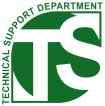Dr
R. Schmidt
24/05/2005, 09:10
Presentation
For the LHC to provide particle physics with proton-proton collisions
at the centre of mass energy of 14 TeV with a luminosity of 10^34 cm-
2s-1, the machine will operate with high-field dipole magnets using
NbTi superconductors cooled to below the lambda point of helium. In
order to reach design performance, the LHC requires both, the use of
existing technologies pushed to the limits...
Mr
J. Sakkinen,
S. Prodon
(CERN)
24/05/2005, 11:10
Ce papier présente l’évolution de l’organisation de la logistique de transport pour
le projet QRL : d’une logistique basique d’acheminement en position des éléments
arrivant au CERN à la gestion d’un stock tampon d’une centaine d’éléments en
souterrain et de flux multiples d’alimentation de chantiers de réparation en surface
et en souterrain. La philosophie et les modalités de mise en...
Mr
J.-M. Chevalley
(CERN)
24/05/2005, 11:50
Le transport et l’installation de quelque 1800 cryo-aimants dans le tunnel LHC seront
réalisés à l’aide d’équipements de transport et de manutention de haute technologie
spécialement développés par le groupe TS-IC.
La section HM devra assurer la maintenance de toute cette chaîne d’équipements : le
pont roulant pour la descente des cryo-aimants dans le tunnel LHC, les véhicules...
Mr
J. Stowisek, Mr
S. Roy
24/05/2005, 15:20
In the summer of 2005, the Technical Infrastructure Monitoring (TIM) system will
replace the Technical Data Server (TDS) as the monitoring system of CERN’s technical
services. Whereas the TDS was designed for the LEP, TIM will have to cope with the
much more extensive monitoring needs of the LHC era. To cater for this, the new
system has been built on industry-standard hardware and...
Mr
D. Lacarrere, Mr
F. Butin, Mr
J. Osborne, Mr
S. Evrard
24/05/2005, 16:00
Following handover by the civil engineering contractors, the new LHC experimental
areas are being fitted-out with appropriate infrastructure and technical services. In
parallel, and in order to make up for the short time available, the installation of
the detectors has already started in the experimental caverns. In addition, the LHC
machine installation now has a non-negligible impact on...
Mr
J. Ridewood
24/05/2005, 17:20
Presentation
A summary of the general service requirements for a large warm dipole magnet and the
challenges and issues associated with their installation will be presented. The LHCb
spectrometer magnet will be used as an example, covering principally the power
supply, cabling and cooling water system from conception to realisation and
commissioning.
Mrs
A.L. Perrot, Mr
T. Wijnands
25/05/2005, 09:20
In contrast with other accelerators at CERN, a large amount of technical equipment
will be located in the LHC tunnel, the underground areas and in the experimental
caverns where they will be exposed to radiation. Nearly all these equipment make, to
a certain extent, use of commercial microelectronics which is extremely sensitive to
radiation damage, both instantaneous damage and cumulative...
Mr
A. Cherif, Mr
S. Atieh
25/05/2005, 09:50
The Cryogenic Distribution Line (QRL), running along the machine tunnel parallel to
the regular lattice of superconducting quadrupole and dipole magnets of LHC,
distributes the refrigeration fluids produced by the refrigerators over long
distances. With a total length of about 25.8 km, the QRL consists of a modular set-up
of pipe and Service Modules (SM), Vacuum Barriers (VB), Fixed Points...
Mr
R. DE OLIVEIRA
(TS-DEM)
25/05/2005, 15:00
To improve the precision of particle detection measurements, there is a growing
interest in the physics community for circuits built with low mass materials that are
more transparent to particles. We have been working for two years in setting up a new
process to build those high-density, low mass multilayer circuits based on aluminium
instead of copper that is commonly used in industry....
Mr
C. Podevin, Mr
M. Jones
25/05/2005, 15:20
Depuis la constitution des données géométriques théoriques des faisceaux jusqu'à la
détermination des positions spatiales réelles des éléments des accélérateurs, en
passant, entre autres, par les vérifications de l'instrumentation utilisée, les
différentes opérations d'alignement des accélérateurs constituent un processus au
cours duquel chaque étape est contrôlée et validée à travers la...
Mrs
E. Sanchez-Corral, Mr
S. Petit
25/05/2005, 16:10
A collaboration project between the Safety Commission (SC) and the Controls, Safety
and Engineering databases group (TS/CSE) started last year. The aim of this
collaboration is to transfer several SC applications from their local environments
onto the D7i-MTF EDMS framework, for which the TS/CSE group is responsible. Different
domains of activity and projects have been defined in the areas...
Mr
T. Hakulinen, Mr
Y. Boncompagni
26/05/2005, 09:40
The main project for the CAE section in the near future is now the progressive
introduction of Catia V5 and its data manager SmarTeam in CERN design offices without
disturbing the LHC project. The report presents the section's guidelines, plans,
propositions, and open questions on the following topics: policy of Catia usage in
the frame of LHC project, user training and Euclid data migration.
Mr
C. Delamare, Mr
R. Folch
26/05/2005, 10:00
Le workpackage TS-MME pour la fabrication des DFBAN&O a généré plus de 1200 plans de
détail en moins d’une année. Ce grand volume – parmi les plus importants du bureau
d’études – associé à l’impératif de démarrer la fabrication en parallèle et avec une
bonne traçabilité, a révélé la nécessité d’outils de gestion appropriés entre la
conception et la production.
Mr
J. Ridewood
LHC and Experiments
Presentation
A summary of the general service requirements for a large warm
dipole magnet and the challenges and issues associated with their
installation will be presented. The LHCb spectrometer magnet will be
used as an example, covering principally the power supply, cabling
and cooling water system from conception to realisation and
commissioning.
